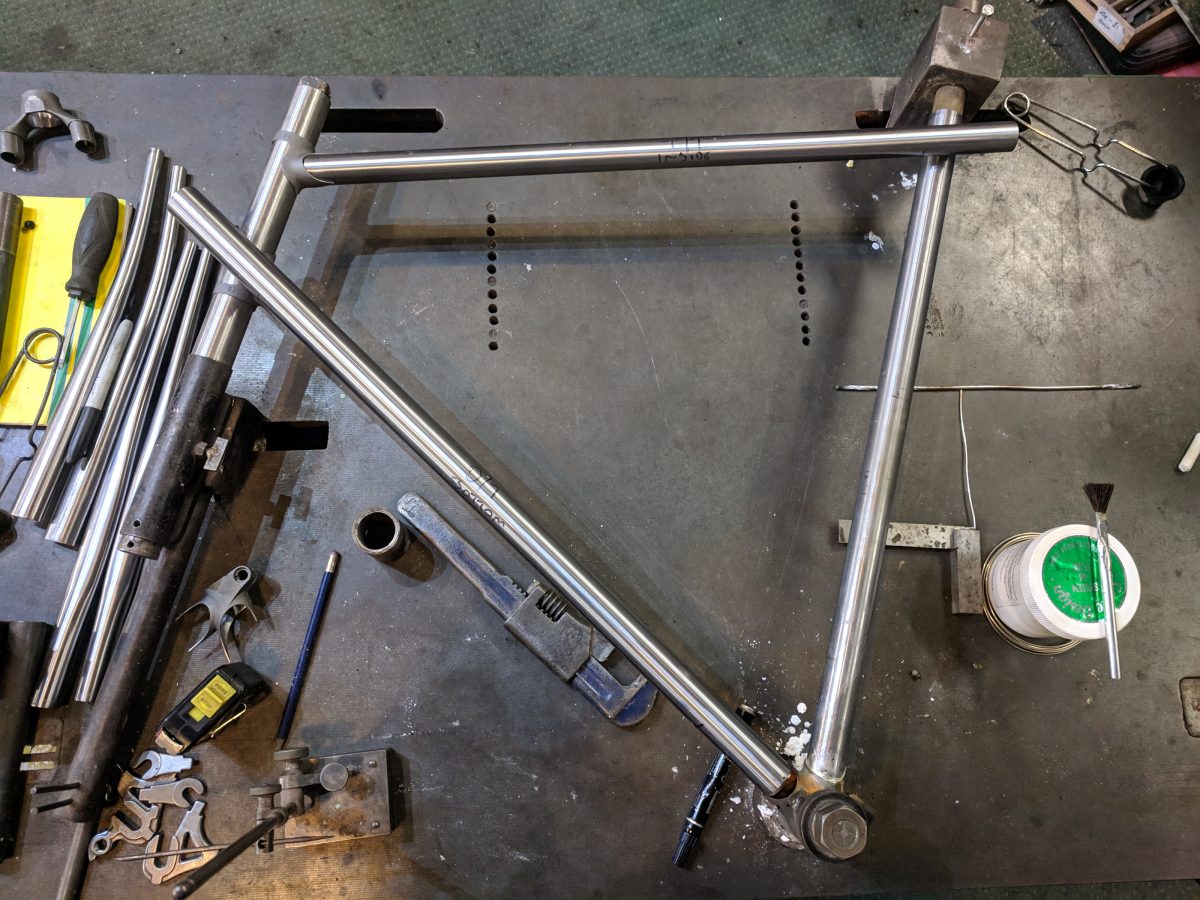Let’s rewind a bit. Picture a time when serious cyclists wouldn’t settle for anything less than a handcrafted frame tailored precisely to their specifications.
Each frame was a work of art, meticulously crafted by skilled artisans. But then came a shift. Italian framebuilders introduced the concept of standard sizes, moving away from personalized craftsmanship to mass production. Of course this led to some of cycling’s most coveted brands but quality and individuality had to take a backseat to efficiency.
As the industry evolved, new materials and techniques emerged. Tig welding promised increased productivity, but it also marked a departure from the artistry of framebuilding. Instead of focusing on perfecting each frame, the industry prioritized speed and cost-effectiveness. Tubing manufacturers had to prioritise metallurgy and botting profiles which suited welding over brazing.
In fact even the venerable Reynolds 753 tubing was a casualty of a changing industry as it prioritised craftsmanship over manufacturability.
Making it harder to manufactur frames when the industry was looking for increased productivity and reduced costs is exactly the reason it wasn’t more successful.
Having broken the dominance of lugged steel frames and introduced welding into mainstream road bikes, it opened up the way for an even cheaper and easier to work material which the bike trade still uses in abundance to this day, Aluminium.
Finally in the 2000s carbon entered the mainstream. And while it may sound futuristic and exotic, the truth is, once the design is set and the molds are made, it’s more about assembly line efficiency than craftsmanship.
Let’s face it: the bike industry’s bottom line is profit. It’s all about cutting costs and maximizing returns.
But at what expense? Over the years, we’ve seen countless so-called “innovations” that solve one problem while creating a myriad of others. Pressed-in bottom brackets, for instance, may be cheaper to manufacture (if you ignore the need for acceptable tolerances!), but they come with their own set of headaches, including the dreaded creaky bottom bracket syndrome.
And then there’s the influx of the latest trends. Carbon frames, now overbuilt to accommodate every rider imaginable? Sure, it makes manufacturing easier, but it also means you’re getting a bike designed to be safe under someone carrying a much heavier load than you might. So, what’s the industry’s response to these beefed-up frames? Wider tires, of course! Marketed as the pinnacle of comfort! You’d think this would be a golden era for steel frames, but unfortunately, the array of parts available for building them differently just isn’t there.
And the cycle continues. Who would have thought that the cutting-edge tech in the bicycle industry would be a return to innovations from the early days of cycling?
It’s almost unbelievable that we’ve ditched the ingeniously designed quick release in favour of reverting to nutted wheels! But the surprises don’t end there. Now, even hookless rims, reminiscent of the early days of pneumatic tires, are making a comeback. Supposedly, it’s because wider tyres are faster? That’s a complete reversal of everything we’ve believed for the past 80-90 years. They’re only faster when compared to riding narrow tires on an overbuilt, stiff carbon frame—not when compared to narrow tires on a steel frame.
Steel frames aren’t relics of the past; it’s simply that steel isn’t suited for cheap manufacturing.
It’s a fact: other materials excel in mass production, but when it comes to silver brazing steel, it’s a different story. In the hands of a skilled artisan, silver brazing treats tubing more delicately, preserving more of their strength. This allows for lighter tubing compared to brass brazing or welding. Additionally, silver brazing results in significantly less distortion, reducing the need for extensive cold setting.
However, here lies the dilemma: the majority of steel tubing available today is optimized for welding, not silver brazing.
Steel holds the potential to create exceptional bikes, but it requires further exploration among framebuilders. Instead of building steel frames with materials made for mass production, we should focus on innovations achievable only through handmade craftsmanship. Perhaps 3D printing holds promise in this regard, or maybe it’s time for a successor to Reynolds 753? Imagine a tubeset specifically designed to maximize the benefits of silver brazed lugs, a technique only mastered by true artisans.



Leave a Reply